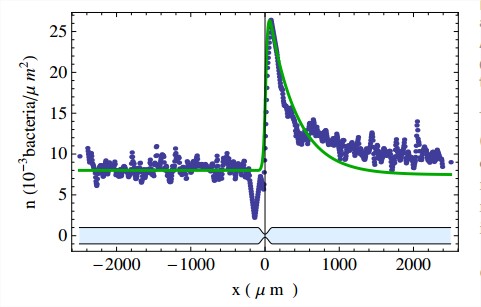Two-Dimensional Continuous Model for Bacterial Flows through Microfluidic Channels
Abstract
Dispersion and migration of bacteria under flow in confined structures is related to a large spectrum of practical interests, and lacks a fully satisfactory understanding. We introduce a simple bidimensional continuous model trying to describe the main characteristics of the movement of E. colialong a microchannel. Their convective transport, lateral wall absorption/desorption processes and migration along lateral walls are taken into account. The model reproduces the anomalous dispersion of bacteria when passing through a constriction.

Published
Jul 15, 2013
How to Cite
FIGUEROA-MORALES, Nuris et al.
Two-Dimensional Continuous Model for Bacterial Flows through Microfluidic Channels.
Revista Cubana de Física, [S.l.], v. 30, n. 1, p. 3-8, july 2013.
ISSN 2224-7939.
Available at: <https://revistacubanadefisica.org/index.php/rcf/article/view/RCF_32-01_3-8_2013>. Date accessed: 03 july 2024.
Issue
Section
Original Articles
This work is licensed under the Creative Commons Attribution-NonCommercial 4.0 International (CC BY-NC 4.0) license.








